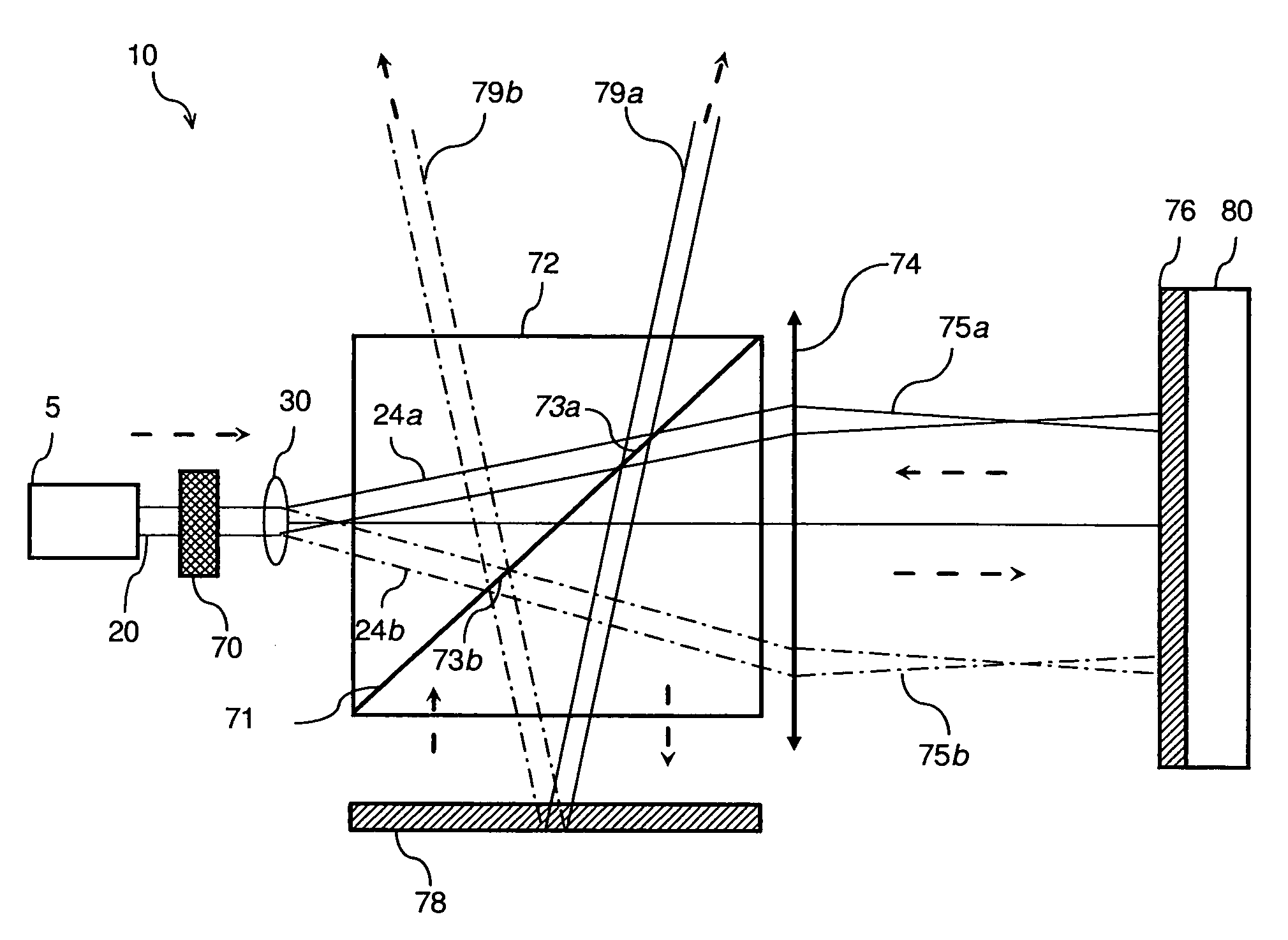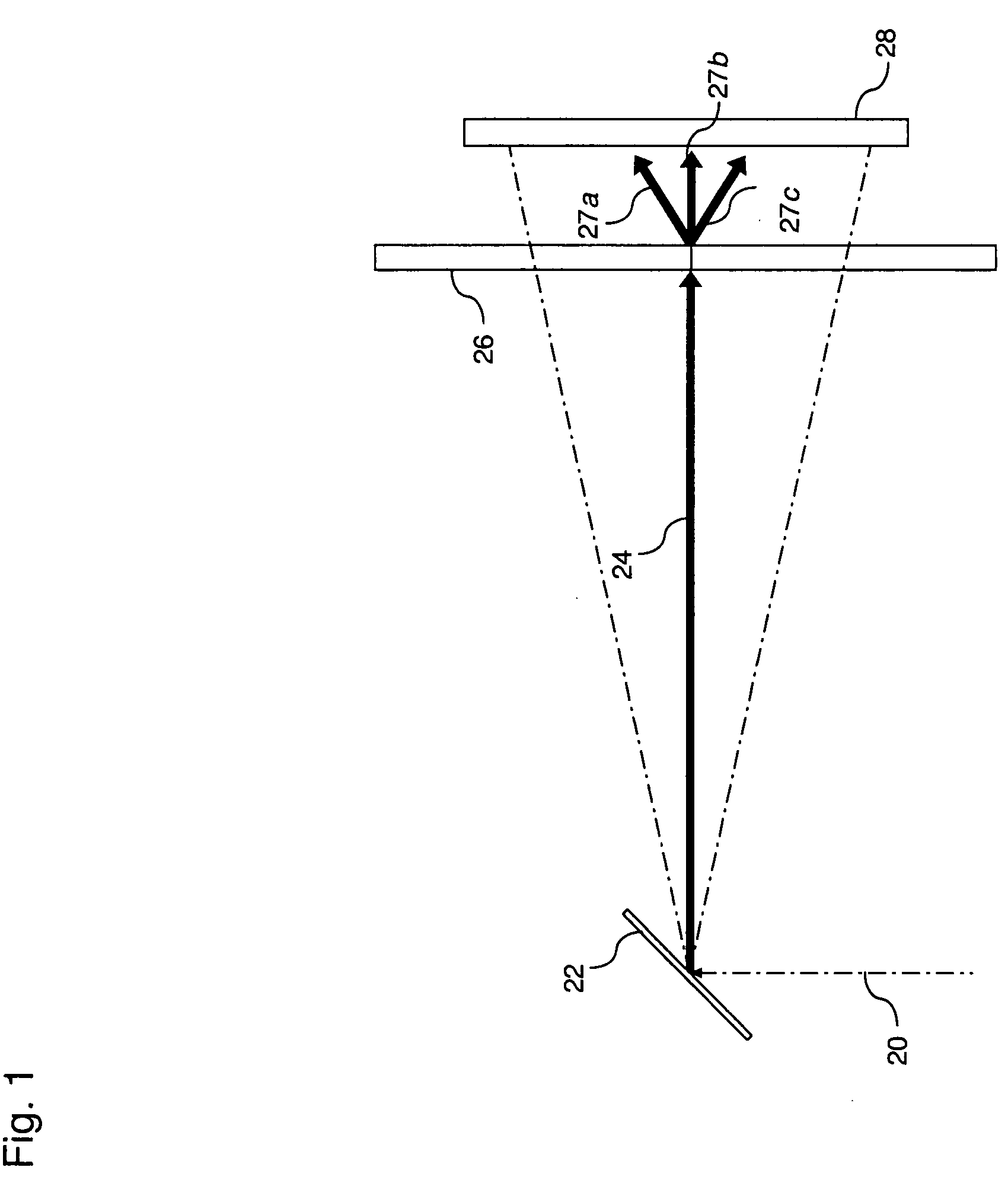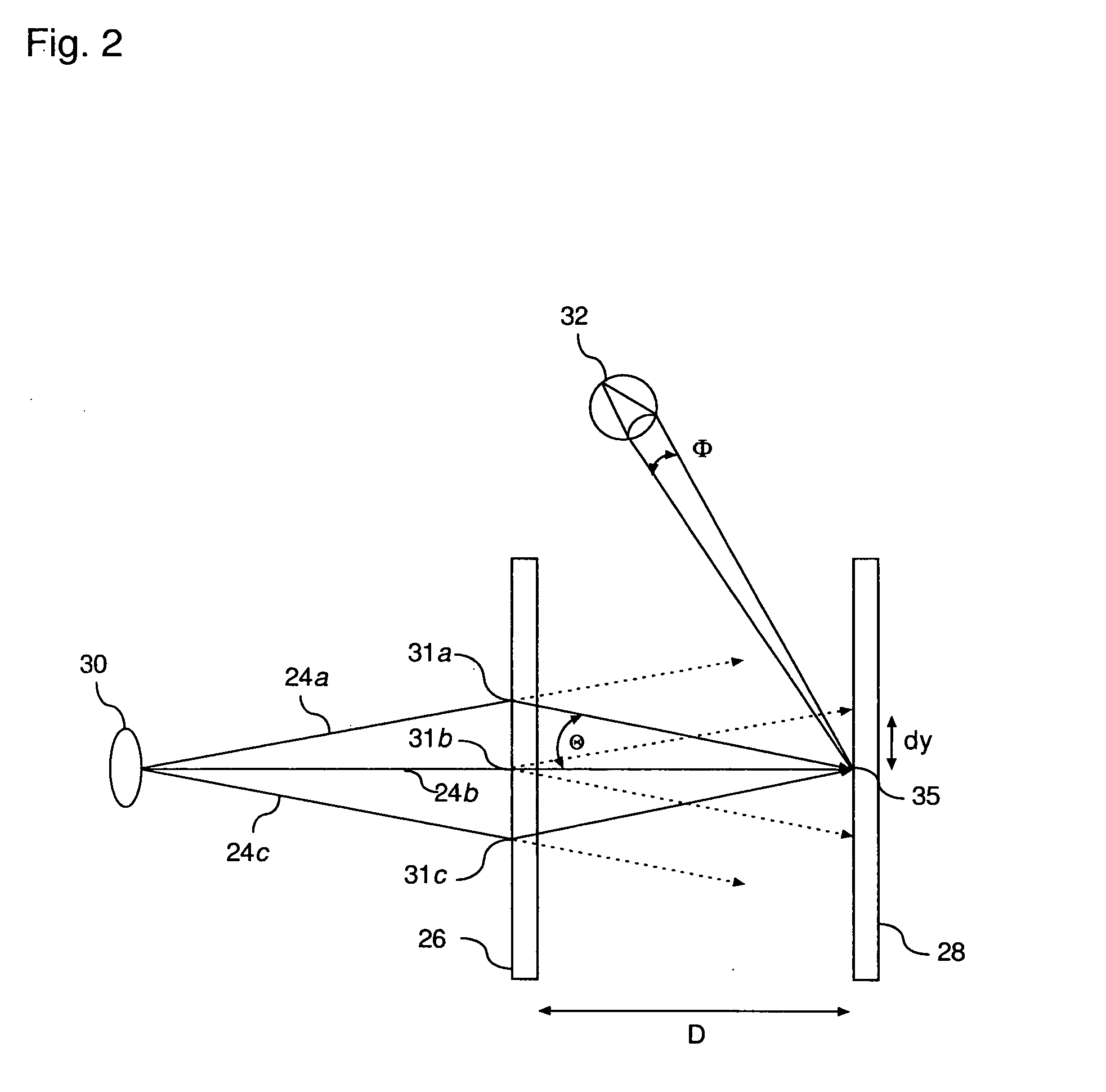Systems and methods for speckle reduction
a technology of speckle reduction and speckle, applied in the field of systems and methods for reducing speckle, can solve the problems of serious degradation of image quality, and granular intensity pattern known as speckl
- Summary
- Abstract
- Description
- Claims
- Application Information
AI Technical Summary
Benefits of technology
Problems solved by technology
Method used
Image
Examples
Embodiment Construction
[0014]Generally, the present inventors have recognized that placing a light disrupting element within the path of a laser that is being scanned onto a projection surface aid in eliminating speckle that is visible to a human eye or detector. More specifically, embodiments of the present invention utilize the concept of a diffusing surface but, instead of moving the diffuser extremely fast, the embodiments take advantage of the fact that, in a laser scanning projection system, the spot is moving extremely fast. To fully understand the operations of the particular embodiments, it may be helpful to review technical information regarding scanned laser sources and light disrupting surfaces, and their relationship to speckle in a scanned laser image.
[0015]For illustrative purposes, the general concept of using an out of focus diffusing or diffracting surface in a laser scanning projection system 10 is illustrated in FIG. 1. In the particular illustration, an optical signal 20, which may be...
PUM
| Property | Measurement | Unit |
|---|---|---|
| spatial frequency | aaaaa | aaaaa |
| spatial frequencies | aaaaa | aaaaa |
| wavelengths | aaaaa | aaaaa |
Abstract
Description
Claims
Application Information
 Login to View More
Login to View More - R&D
- Intellectual Property
- Life Sciences
- Materials
- Tech Scout
- Unparalleled Data Quality
- Higher Quality Content
- 60% Fewer Hallucinations
Browse by: Latest US Patents, China's latest patents, Technical Efficacy Thesaurus, Application Domain, Technology Topic, Popular Technical Reports.
© 2025 PatSnap. All rights reserved.Legal|Privacy policy|Modern Slavery Act Transparency Statement|Sitemap|About US| Contact US: help@patsnap.com



